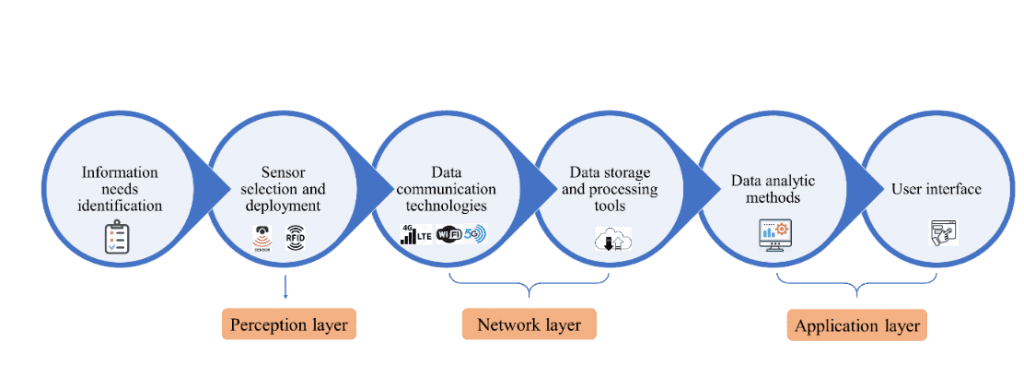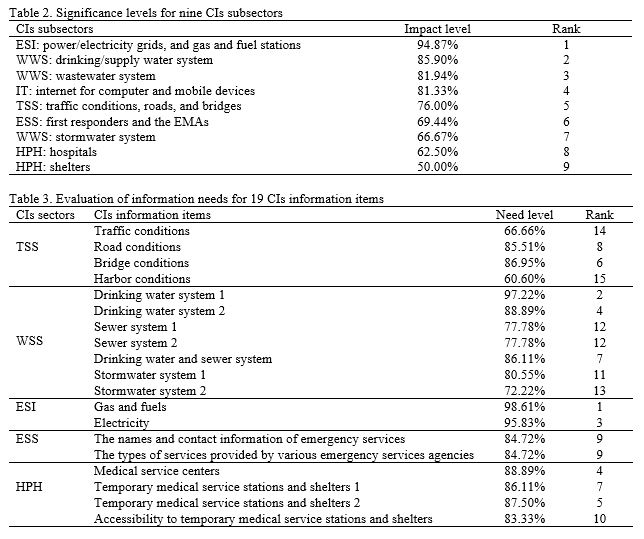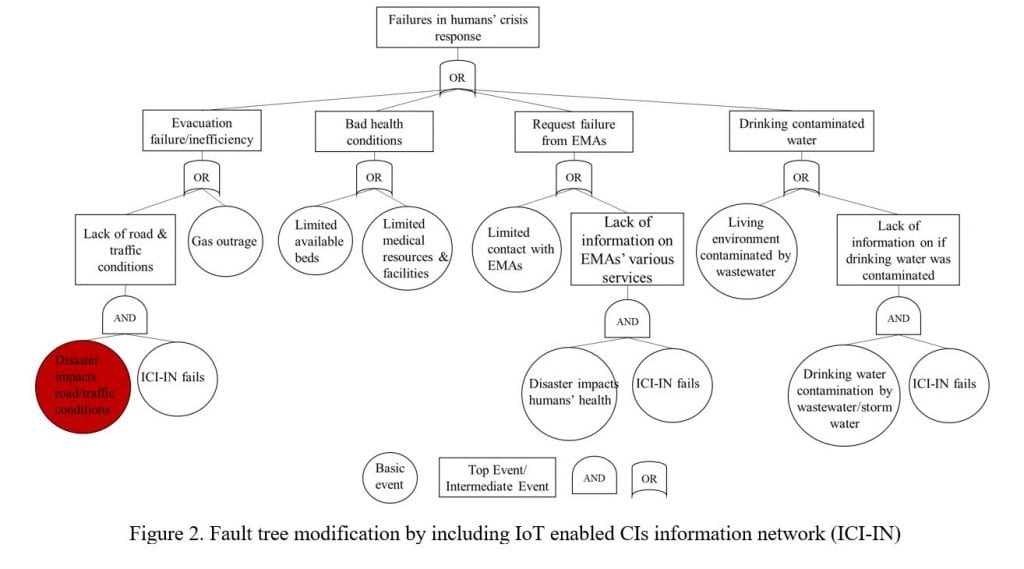An IoT-Enabled Critical
Infrastructure Information Network
(ICI-IN) for a Future Resilient City
Critical infrastructures (CIs) include transportation, electricity, healthcare, information technology, emergency services, and water systems. CIs play a critical role in supporting emergency management agencies (EMAs) and affected people’s crisis response activities during disasters, such as transportation for evacuations, drinking water provision for basic needs, and electricity supply for making food. Previous studies including crisis informatics and the use of the Internet of Things (IoT) cannot include comprehensive situation awareness (SA) of CIs conditions in crisis. To resolve this gap, this project takes the first step for supporting crisis response activities of the EMAs and affected people through enhanced SA of CIs. Using Port St. Joe (PSJ) as the case study area, this study
evaluates the CIs information needs. This project investigates the affected people’s information needs of CIs’ various sectors through a questionnaire among the residents in PSJ. The findings can support the comprehensive implementation of the IoT enabled smart system for CIs such as the optimized distribution of the limited resources to CIs sectors which are in the most urgent needs of the affected people. Additionally, this project has built the fault tree model to validate the effectiveness of IoT for enhancing SA of CIs. The results demonstrate that implementing the IoT-enabled critical infrastructure information network help to enhance the SA of CIs and further improve community resilience.

TEAM
Rui Liu, Assistant Professor, M.E. Rinker, Sr. School of Construction Management, liurui@ufl.edu
Xiao Yu, Assistant Professor, Department of Civil and Coastal Engineering, Xiao.yu@essie.ufl.edu
Xilei Zhao, Assistant Professor, Department of Civil & Coastal Engineering, xilei.zhao@essie.ufl.edu
Student Collaborators: Faxi Yuan, PhD, M.E. Rinker, Sr. School of Construction Management, faxi.yuan@ufl.edu
Community Partners: Kevin Pettis, Manager, Port St. Joe Wastewater Treatment Plant. Paul Thorpe, Resource Planning Manager, NWFWMD and John B. Crowe, CTP Program Manager, NWFWMD. (North West Florida Water Management District).



